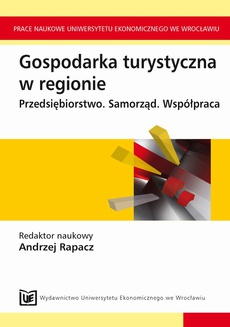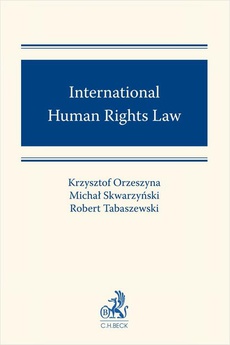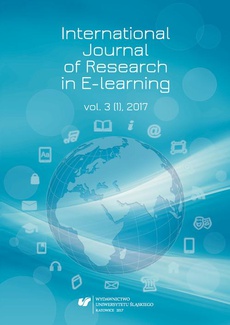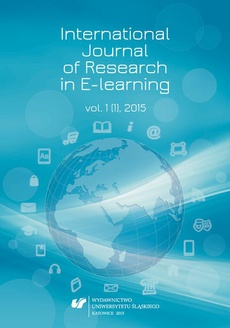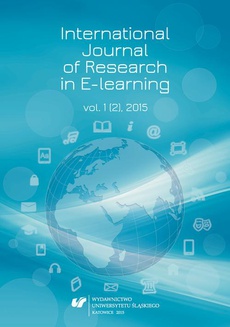POLECAMY
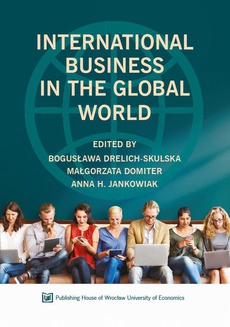
International Business in the Global World
Format:
ibuk
In the 21st century, globalisation processes and the accompanying liberalisation of the flow of factors of production, information and ideas, driven by the development of technological innovations and information technologies, have become an inherent part of the international business (IB) catalogue, and recognised as major forces behind modern escalation and dynamization of the activities pursued by international enterprises in various regions of the global economy. Understanding of the complex nature of international business pursued in a given region requires detailed studies and analyses of the models and connections characteristic of each of the above phenomena (domains). At the same time, concluding transactions in international business requires in-depth local market research in order to examine the local business environment, become familiar with various determinants that may apply, and choose the proper form of activity allowing for all limitations. Such requirements associate macroeconomic issues with microeconomic ones, which are reflected in this handbook. By integrating several disciplines of science (international management, international marketing, international logistics, international finance) associated with the core activities of international business, the authors wanted to present a comprehensive elucidation of the whole spectrum of problems and challenges faced by modern managers who conduct their activities on international markets. For the purpose of satisfying these requirements, the authors applied a specific structure of the handbook, composed of eight chapters related to each other in terms of logic and subject matter.
| Rok wydania | 2018 |
|---|---|
| Liczba stron | 362 |
| Kategoria | Inne |
| Wydawca | Wydawnictwo Uniwersytetu Ekonomicznego we Wrocławiu |
| ISBN-13 | 978-83-7695-701-2 |
| Numer wydania | 1 |
| Język publikacji | angielski |
| Informacja o sprzedawcy | ePWN sp. z o.o. |
Ciekawe propozycje
Spis treści
| Introduction | 11 |
| Chapter 1 15 | |
| International Business and Related Fields of Study 15 | |
| 1.1. Evolution of International Business as a field of study in the age of economic globalisation | 16 |
| 1.1.1. Introduction | 16 |
| 1.1.2. The nature and the definition of International Business | 17 |
| 1.1.3. Evolution and trends of research in the field of International Business | |
| 1.1.4. New research problems in the field of International Business – challenges for the 21st century | 23 |
| 1.2. Globalisation processes and their impact on International Business | 30 |
| 1.2.1. The concept of globalisation – evolution, properties, main actors | 30 |
| 1.2.2. Liberalisation as a precondition for the development of globalisation | 32 |
| 1.2.3. Innovation as a prime mover in globalisation development | 35 |
| 1.2.4. Other factors that impact the development of globalisation | 39 |
| 1.2.5. The effects of globalisation – in general terms and in relation to IB | 41 |
| 1.3. Regionalisation and International Business | 45 |
| 1.3.1. Regionalisation and its rationale | 45 |
| 1.3.2. The effects of regionalisation | 48 |
| 1.3.3. The world’s regional integration groupings | 50 |
| Chapter 2 53 | |
| Enterprise in International Business 53 | |
| 2.1. The internationalisation process | 54 |
| 2.2. Transnational corporations and their role in the globalisation process | 55 |
| 2.2.1. The classification of international enterprises | 55 |
| 2.2.2. The history of TNCs | 59 |
| 2.2.3. The development of corporations | 60 |
| 2.2.4. The drivers of internationalisation | 61 |
| 2.2.5. The strategies of internationalisation | 63 |
| 2.2.6. Forms of foreign expansion | 65 |
| 2.2.7. Foreign Direct Investment | 68 |
| 2.2.8. Mergers and Acquisitions in International Business | 71 |
| 2.2.9. Forms of TNC cooperation on the global market | 75 |
| 2.3. Network connections between companies in the global economy | 78 |
| 2.3.1. Virtual enterprises | 78 |
| 2.3.2. Clusters as a form of cooperation between companies | 84 |
| 2.4. Small and medium-sized companies in International Business | 89 |
| 2.4.1. SME definition criteria | 90 |
| 2.4.2. Forms of internationalisation adopted in the SME sector | 93 |
| 2.4.3. Determinants and barriers to internationalisation in the SME sector | 95 |
| 2.4.4. Innovative potential of small and medium-sized companies | 98 |
| Chapter 3 103 | |
| International Business Management 103 | |
| 3.1. Theoretical fundaments of international management | 104 |
| 3.2. International management | 107 |
| 3.3. Supply chain | 112 |
| 3.4. International logistics | 113 |
| 3.5. Selected modern methods of management | 116 |
| 3.5.1. Business Process Reengineering (BPR) | 116 |
| 3.5.2. Benchmarking | 118 |
| 3.5.3. Lean Management | 119 |
| 3.5.4. Kaizen | 120 |
| 3.5.5. Time Based Management | 122 |
| 3.5.6. Just in Time | 122 |
| 3.5.7. Total Quality Management | 124 |
| 3.5.8. Knowledge Management | 126 |
| 3.6. The role of the manager in International Business | 127 |
| Chapter 4 131 | |
| International Marketing 131 | |
| 4.1. The role of international marketing | 132 |
| 4.1.1. The essence and scope of international marketing | 132 |
| 4.1.2. Concepts of international marketing | 133 |
| 4.2. International environment of the enterprise | 136 |
| 4.2.1. The role and importance of the international environment | 136 |
| 4.2.2. Elements of foreign external environment | 137 |
| 4.3. Evaluation of opportunities in the international market | 148 |
| 4.3.1. Problems of foreign market research | 148 |
| 4.3.2. Identification and analysis of market opportunities | 150 |
| 4.3.3. Segmentation of foreign markets | 152 |
| 4.4. The use of marketing instruments on the international market | 157 |
| 4.4.1. International product offering | 157 |
| 4.4.2. Pricing policies on international markets | 162 |
| 4.4.3. International channels of distribution | 167 |
| 4.4.4. Communication in international marketing | 173 |
| Chapter 5 189 | |
| International Business Finance | 189 |
| 5.1. Concept of international corporate financing | 190 |
| 5.2. Exchange rate and its formation | 191 |
| 5.2.1. Concept and functions of the exchange rate | 191 |
| 5.2.2. Classification of exchange rates | 192 |
| 5.2.3. Exchange rate regimes – typology and problem of choice | 193 |
| 5.2.4. Equilibrium on the foreign exchange market | 199 |
| 5.2.5. Economic and non-economic factors influencing the exchange rate | 200 |
| 5.2.6. Consequences of changes in exchange rate for International Business | 204 |
| 5.3. Role of foreign exchange market in International Business | 206 |
| 5.3.1. Introduction to foreign exchange (forex) market | 206 |
| 5.3.2. Transactions in forex market | 208 |
| 5.3.3. Quotations in forex market | 208 |
| 5.4. Technical aspects of foreign exchange transactions | 210 |
| 5.5. Finance management in International Business | 210 |
| 5.5.1. International capital management | 210 |
| 5.5.2. Long-term financing of business in international financial markets | 211 |
| 5.5.3. Short-term financing of business in international financial markets | 212 |
| 5.5.4. Exchange risk management | 213 |
| Chapter 6 217 | |
| Contract as a Tool of International Business 217 | |
| 6.1. Introduction | 218 |
| 6.2. The transaction cycle in foreign trade | 221 |
| 6.3. The concept of contract | 223 |
| 6.4. Standard forms and general contractual conditions | 226 |
| 6.5. Contractual clause | 228 |
| 6.5.1. Formal and structuring clauses | 228 |
| 6.5.2. Principal (fundamental) clauses | 230 |
| 6.5.3. Supplementary clauses | 235 |
| 6.6. Breach of contractual obligations | 242 |
| Chapter 7 247 | |
| International Settlements 247 | |
| 7.1. Basic regulations of Polish foreign exchange law | 248 |
| 7.2. Documents determining payment and their characteristics | 250 |
| 7.2.1. Financial documents | 252 |
| 7.2.2. Commercial documents | 257 |
| 7.2.3. Transportation documents | 258 |
| 7.2.4. Insurance documents | 263 |
| 7.2.5. Supporting documents | 265 |
| 7.3. Methods of payment in international trade | 266 |
| 7.4. Rules for selecting the method of payment for the base price (Incoterms) | 271 |
| 7.5. Factoring and forfaiting in foreign trade | 277 |
| Chapter 8 281 | |
| Phenomena in International Business 281 | |
| 8.1. Migrations in International Business | 282 |
| 8.1.1. Concept, types and causes of migration | 282 |
| 8.1.2. Contemporary directions of migration | 284 |
| 8.1.3. Migration as a challenge for International Business | 286 |
| 8.1.4. Summary | 292 |
| 8.2. Multiculturalism in International Business | 293 |
| 8.2.1. The idea of multiculturalism | 293 |
| 8.2.2. Multiculturalism – an international perspective | 295 |
| 8.2.3. Multicultural corporations | 298 |
| 8.2.4. Criticism of multiculturalism | 301 |
| 8.2.5. Summary | 303 |
| 8.3. The changing consumption model | 304 |
| 8.3.1. Definition and factors shaping the consumption model | 304 |
| 8.3.2. The premise for changes in the consumption model | 306 |
| 8.3.3. Characteristics of the most important trends in world consumption | 309 |
| 8.3.4. Challenges for International Business | 315 |
| 8.3.5. Summary | 318 |
| 8.4. Corruption as a challenge for International Business | 318 |
| 8.4.1. Corruption – definitions, sources and types | 318 |
| 8.4.2. Corrupt behaviour in International Business | 322 |
| 8.4.3. Challenges for International Business in the field of corruption | 326 |
| 8.5. Diversification of environmental standards and activities of international companies | 329 |
| Bibliography | 341 |
| List of Figures | 361 |
| List of Tables | 362 |










